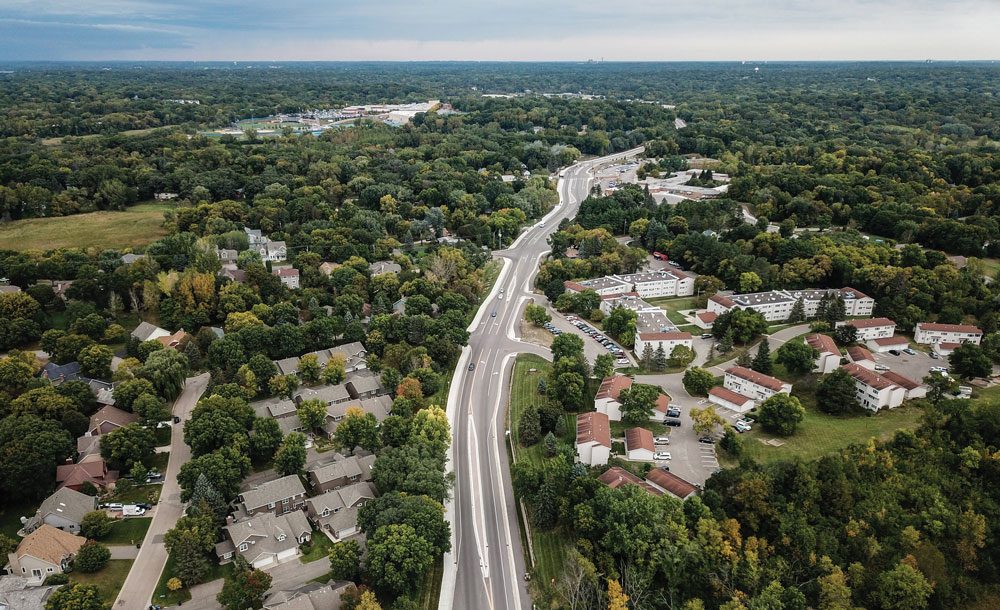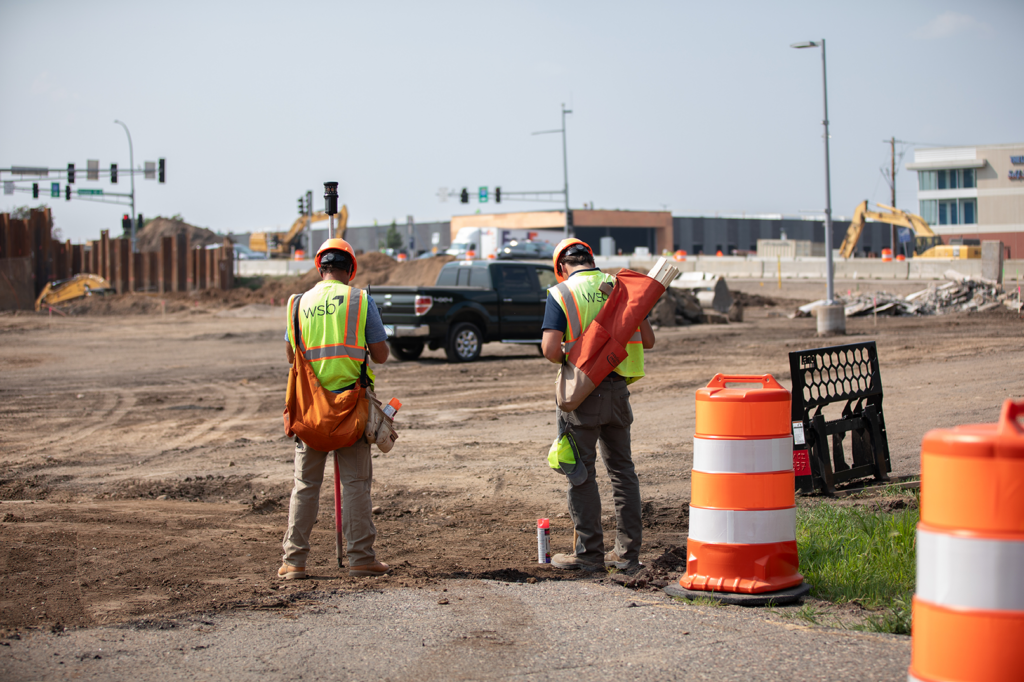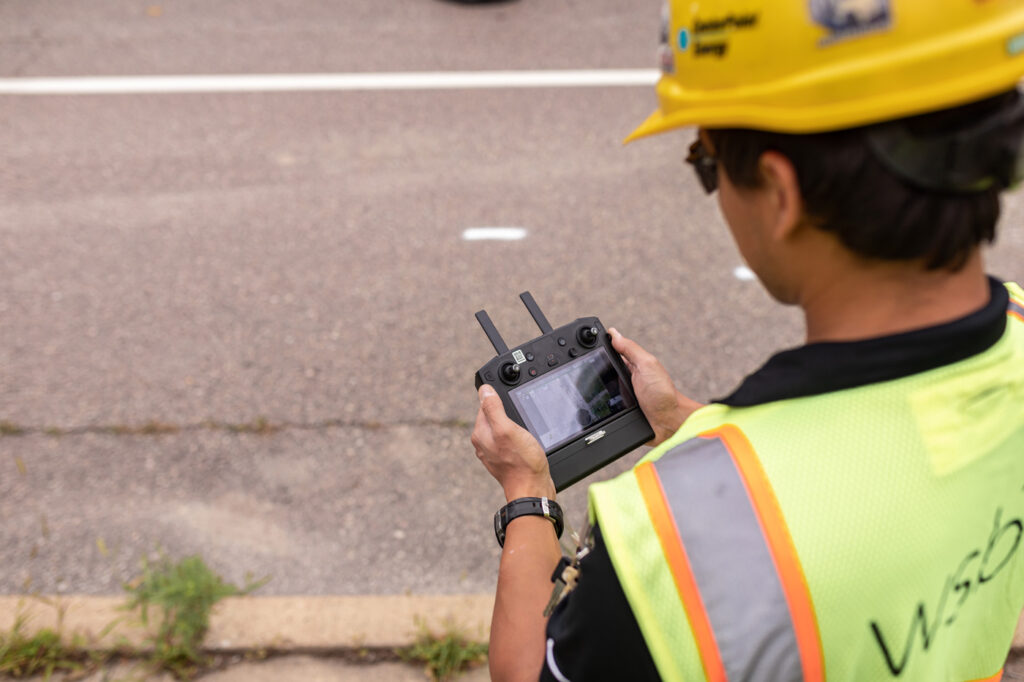August 1, 2024
By Jake Newhall, Director of Water Resources and Samuel Phillips, Water Resources Engineer, WSB
As communities grow, the challenge of stormwater management becomes increasingly complex. The key to success lies in proactive planning and the strategic development of infrastructure that can adapt to future growth. Learn more about strategies for effective stormwater management in growing communities.
Impact of Population Growth on Stormwater Systems
With urban expansion comes the inevitable addition of impervious surfaces – concrete, asphalt, and roofs, for example – which significantly increases stormwater runoff and alters natural drainage patterns. These changes make communities more vulnerable to flooding and localized erosion, pushing existing infrastructure to its limits and leading to environmental degradation.
Strategic Infrastructure Planning
Effective stormwater management starts with comprehensive planning. Communities need to integrate stormwater management considerations into all stages of development. This includes assessing the potential impact of new construction on stormwater runoff and making necessary adjustments to the stormwater system in early planning phases. It is critical that the planning factors in the existing regulatory framework at the state level, e.g., MPCA regulations in Minnesota, or at local level, e.g., Watershed Districts or city regulations.
Incorporating Flexibility in Infrastructure Design
To accommodate growth, stormwater systems must be designed for flexibility and scalability. This involves creating systems that can be expanded or adjusted as the population grows and land use changes. Techniques such as flow rate control structures, expandable stormwater detention facilities including underground storage are vital. These systems ensure that the infrastructure can evolve in step with the growing community’s needs, without requiring complete overhauls. Often it can be beneficial to plan stormwater management at a regional level, rather than on a project-by-project basis.
Surface Water Quality
In recent decades the stormwater management focus has shifted from traditional rate control through detention towards water quality and volume reduction. Runoff retention, infiltration practices, and erosion control techniques are essential components of the infrastructure planning. Creative solutions such as biofiltration or underground infiltration play an important role in keeping the sediment and nutrient loads at a minimum to preserve healthy riverine and lacustrine ecosystems.
Enhancing System Resilience Through Advanced Engineering
Employing advanced engineering solutions can significantly boost the efficiency and resilience of stormwater systems. For instance, real-time monitoring systems can provide immediate data on water levels, flow rates and system performance, allowing for swift responses to potential flooding events. Additionally, automated control systems can dynamically manage gates and pumps to optimize water flow during different weather conditions.
As communities build resilient infrastructure in growing areas, it may be desirable to bring enhanced stormwater infrastructure to previously developed areas. This is often a challenge, as space may be limited. Hydraulic and water quality modeling can be useful tools in completing subwatershed assessments to identify optimal areas for improvement.
Community Engagement and Education
Community involvement is crucial for the success of stormwater management strategies. Educating the public about the importance of reducing surface runoff and maintaining personal property to aid in water absorption can have profound effects. Community-based initiatives, such as rainwater harvesting and the proper maintenance of private drainage systems, complement larger infrastructure projects and empower residents to contribute to the health of their environment.
Economic and Regulatory Considerations
Planning for the economic aspects of stormwater management is as critical as the technical components. Funding mechanisms, whether through local government budgets, grants or public-private partnerships, need to be established. Moreover, robust regulatory frameworks that mandate sustainable stormwater practices in new developments can drive compliance and ensure that growth is managed in an environmentally responsible manner.
How WSB Can Help
Managing stormwater in a growing community requires foresight, innovation, and community collaboration. At WSB, we provide expert consulting and engineering services that help communities plan, design, construct and maintain flexible, efficient and cost-effective stormwater management systems. Our approach ensures that your infrastructure not only meets today’s needs but is also prepared for tomorrow’s challenges.
Jake has more than 15 years of engineering experience designing and managing many types of water resources projects, including modeling, planning, design, maintenance programs, and construction. Jake has worked with various municipalities, counties and state agencies to solve challenging water quality and water quantity problems.
[email protected] | 763.231.4861

Samuel has experience in hydrologic and hydraulic modeling, water quality modeling and permitting. His stream restoration experience spans all phases, from feasibility to plan production to construction observation.
[email protected] | 563.607.4018





